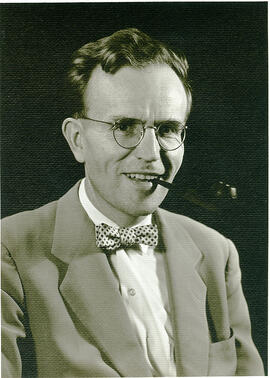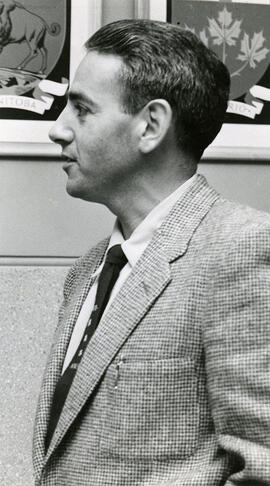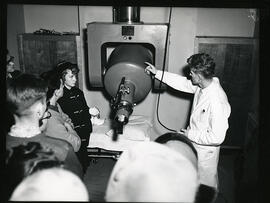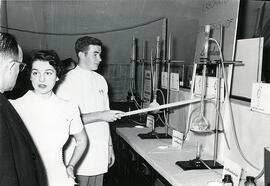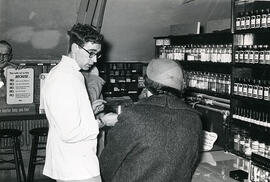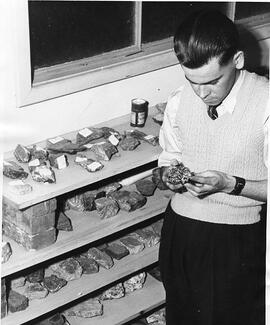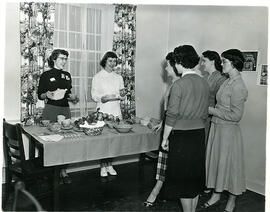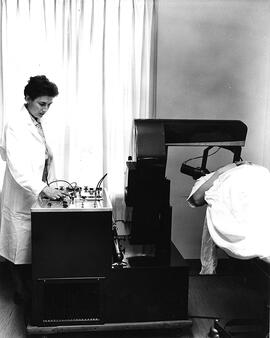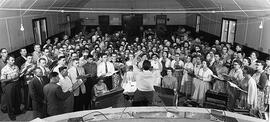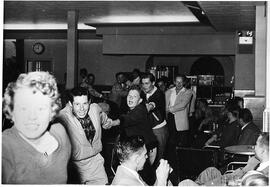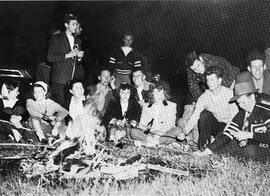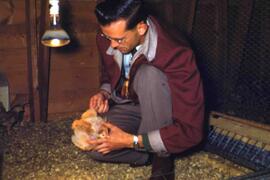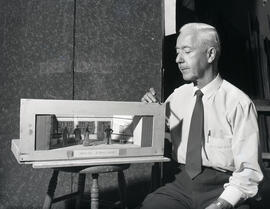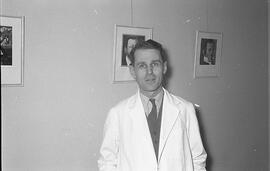- A-3387
- Stuk
- [195-?]
Head and shoulders image of Taylor A. Steeves, professor, Biology.
Bio/Historical Note: Born in 1926 in Quincy, Massachusetts, Taylor Steeves obtained his B.Sc. at the University of Massachusetts in Amherst, and in 1951 was awarded his Ph.D. in Biology from Harvard University. As part of his graduate training he had spent a year as a Sheldon Travelling Fellow at the University of Manchester, and in 1953, while still a Harvard Fellow, he was a Visiting Investigator at the Institut National de Recherches Agronomiques in Versailles, France. In 1954 he returned to Cambridge to join the faculty of Harvard University as an Assistant Professor. He remained at Harvard for five more years, and in 1959 was recruited by Professor Donald Rawson to the Department of Biology at the University of Saskatchewan as an Associate Professor. He was promoted to full Professor in 1964. He served as Head of his department from 1976 to 1981 and returned to serve as Acting Head in 1987-1988. For his distinguished service, he was named the Rawson Professor of Biology in 1985, and he retired from the University of Saskatchewan in 1994 as Professor Emeritus. His early research focused on several aspects of plant development, with particular emphasis on the application to this study of tissue culture techniques he had acquired in France and introduced to Canada. In the latter stages of his research career his focus shifted to the then somewhat unfashionable study of native plants of the prairies, and in this vein he supervised a number of graduate student projects on the prairie lands surrounding the wheat and hay fields of his farm on the banks of the South Saskatchewan River. Throughout his career he was active as an author and published many papers, some with his wife, Margaret Wolfe Steeves, also a professor of Biology. In 1992 the University of Saskatchewan awarded him the earned degree of Doctor of Science in recognition of his research, and in 1998 he received an honourary Doctor of Science from the University of Guelph. Of his many honors and awards, he stated that the most meaningful to him was the Master Teacher Award granted to him by the University of Saskatchewan in 1990. Steeves was an active member of the Anglican Church, which he joined only as a young man on his arrival at Harvard. He served as Deacon in his local parish in Saskatoon and for many years participated at the national level in the organization of his Church. In 1991 the College of Emmanuel and St. Chad of the University of Saskatchewan awarded him an honourary Doctor of Canon Law in recognition of his services to the College. Steeves died in Saskatoon in 2011.

